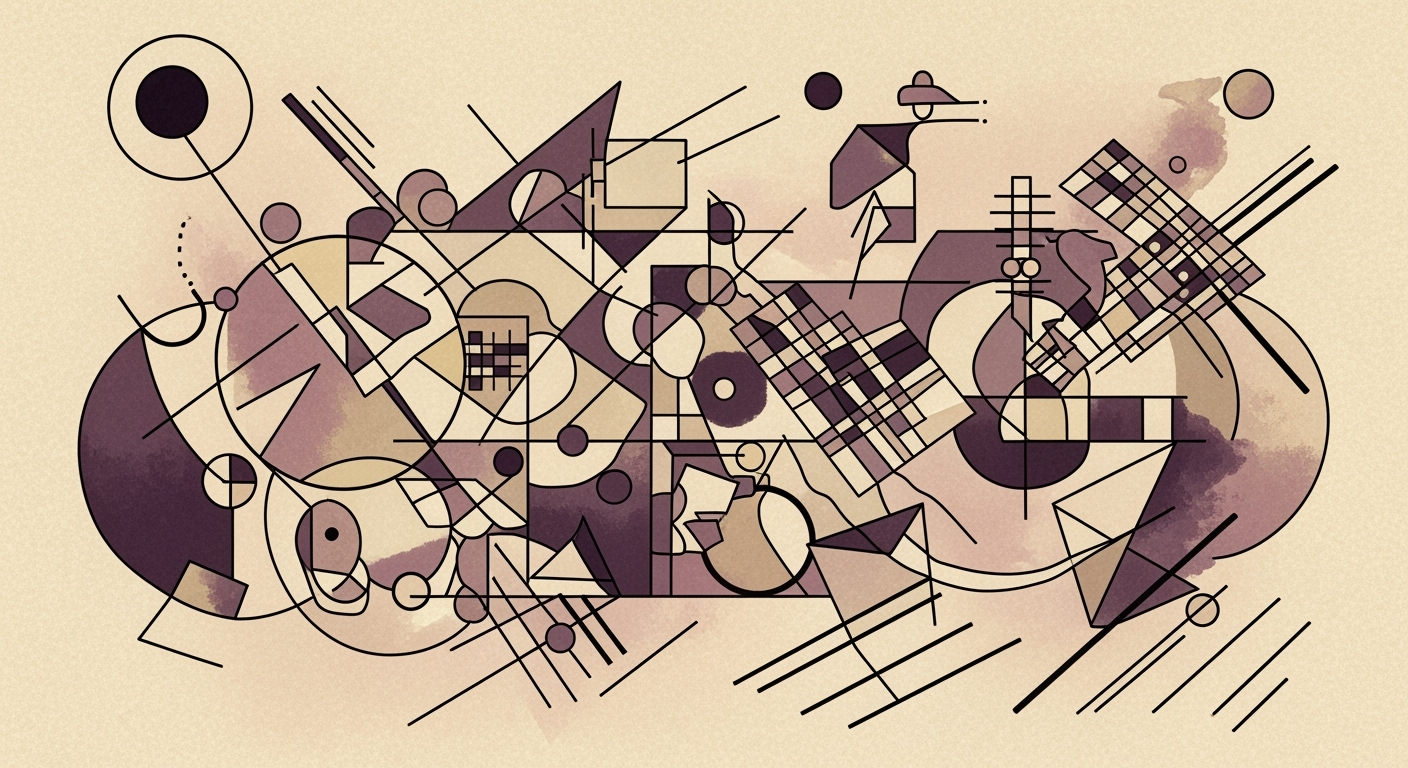Best Tool for Clinical Documentation in Skilled Nursing Facilities
Discover the top clinical documentation tools for skilled nursing facilities. Explore AI-driven solutions that boost accuracy, compliance, and efficiency in 2025.
Quick Navigation
- 1. Introduction
- 2. Current Challenges in Best Tool For Clinical Documentation
- 3. How Sparkco AI Transforms Best Tool For Clinical Documentation
- 4. Measurable Benefits and ROI
- 5. Implementation Best Practices
- 6. Real-World Examples
- 7. The Future of Best Tool For Clinical Documentation
- 8. Conclusion & Call to Action
1. Introduction
Did you know that skilled nursing facilities (SNFs) using AI-powered documentation tools are seeing, on average, a 387% return on investment? As we approach 2025, the landscape of clinical documentation in post-acute care is rapidly evolving. Cutting-edge solutions—driven by artificial intelligence, natural language processing, and seamless electronic health record (EHR) integration—are transforming how clinical teams capture, organize, and leverage patient data. But as technology advances, SNFs face a critical challenge: selecting the best tool that not only streamlines documentation, but also enhances accuracy, supports compliance with stringent CMS regulations, and ultimately improves patient outcomes.
Traditional documentation methods can burden staff, increase the risk of errors, and threaten both quality of care and regulatory compliance. With rising demands for transparency, audit readiness, and real-time data, the pressure is on for skilled nursing facilities to implement robust solutions that deliver measurable results. From improved financial performance to better staff productivity, the right clinical documentation tool can be a game-changer—but with so many options and rapidly changing technology, how do you know which platform is best for your facility?
In this article, we’ll break down the top trends shaping clinical documentation for SNFs in 2025, highlight essential features to look for in a documentation tool, and review leading solutions on the market. You’ll learn about the latest compliance requirements, implementation challenges, and actionable strategies to maximize ROI—empowering your team to make an informed, future-proof choice.
2. Current Challenges in Best Tool For Clinical Documentation
Implementing the best tool for clinical documentation—such as advanced Clinical Documentation Improvement (CDI) platforms integrated with Electronic Health Records (EHRs) and powered by Artificial Intelligence (AI)—offers tremendous promise. However, healthcare facilities continue to face significant challenges that can impact operational efficiency, regulatory compliance, and ultimately, patient care quality. Below are some of the most pressing pain points, supported by current research and data.
-
1. Integration Complexity with Legacy Systems
Many healthcare facilities rely on a patchwork of legacy EHRs and third-party systems. Integrating modern CDI tools with these existing platforms is complex and costly. According to a recent survey, 63% of healthcare IT leaders cite integration difficulties as the most significant barrier to effective documentation improvement. -
2. Staff Resistance and Training Gaps
Clinical staff often struggle to adapt to new documentation tools, especially when usability is lacking. Inadequate training leads to inconsistent data entry and workflow disruptions. Research shows that up to 45% of clinicians feel overwhelmed by new documentation requirements, directly affecting documentation accuracy and morale. -
3. Data Quality and Consistency Issues
Even with advanced tools, incomplete or inconsistent documentation remains a challenge. Inaccurate clinical records can undermine patient safety, delay care, and result in costly errors. A recent study found that 25% of patient records contained documentation errors, with significant implications for patient outcomes and compliance. -
4. Cost Constraints and Budget Limitations
High implementation and ongoing maintenance costs of sophisticated CDI platforms present a significant barrier, especially for smaller facilities. According to industry data, the average cost to implement a new CDI tool can exceed $200,000, excluding training and support expenses. -
5. Regulatory and Compliance Pressures
Ever-evolving healthcare regulations require timely, accurate, and complete documentation. Failing to meet standards such as HIPAA or CMS requirements can result in hefty fines and jeopardize accreditation. Nearly 30% of facilities surveyed reported compliance issues directly tied to documentation shortcomings. -
6. Workflow Disruptions and Productivity Loss
The transition to new documentation tools can disrupt established workflows, leading to reduced productivity. Clinicians may spend up to 35% more time on documentation during the initial months post-implementation, impacting time spent on direct patient care. -
7. Data Security and Privacy Risks
The increased digitization of clinical data heightens risks related to data breaches and unauthorized access. In 2023 alone, healthcare data breaches exposed over 59 million patient records in the U.S., underscoring the need for robust security features in any documentation tool.
These pain points collectively underscore the need for thoughtful planning, robust training, and ongoing support when deploying the best clinical documentation tools. Addressing these challenges head-on can lead to improved compliance, streamlined operations, and better patient outcomes. For more detailed statistics and industry trends, see the latest research on clinical documentation implementation challenges.
3. How Sparkco AI Transforms Best Tool For Clinical Documentation
Clinical documentation is the backbone of quality care, compliance, and reimbursement in healthcare facilities. However, common challenges such as time-consuming manual entries, risk of errors, incomplete records, and workflow disruptions often hinder effective implementation. Sparkco AI emerges as a transformative solution, leveraging artificial intelligence and automation to address these pain points and set a new standard for clinical documentation.
-
1. Automated, Real-Time Data Capture
Sparkco AI seamlessly captures clinical data as care is delivered, reducing the need for manual input. By converting voice notes and clinician-patient interactions into structured documentation in real-time, it eliminates after-hours charting and missed information. This automation minimizes delays and ensures records are always up-to-date. -
2. Intelligent Error Detection & Correction
The platform uses advanced AI to automatically flag inconsistent, missing, or ambiguous entries. Clinicians receive instant prompts to clarify or complete sections, reducing the risk of costly errors and claims denials. This proactive approach enhances both accuracy and compliance with industry standards. -
3. Contextual Clinical Decision Support
Sparkco AI provides on-the-spot recommendations based on best practices, patient history, and current guidelines. As clinicians document, the system highlights relevant care protocols, suggesting interventions or reminders for required assessments. This not only streamlines workflows but also supports better patient outcomes. -
4. Seamless EHR Integration
Designed with interoperability in mind, Sparkco AI integrates smoothly with all major Electronic Health Record (EHR) systems. Its flexible API architecture ensures that data flows bidirectionally—no duplicate data entry, no workflow interruptions. Facilities can deploy Sparkco AI without overhauling existing systems, preserving established processes while enhancing documentation quality. -
5. Customizable Templates and Smart Shortcuts
The platform offers specialty-specific templates and intelligent shortcuts that auto-populate repetitive fields. Clinicians can personalize templates to their documentation style, further speeding up the process while ensuring completeness and consistency across records. -
6. Real-Time Analytics & Reporting
Sparkco AI generates actionable insights with up-to-the-minute analytics on documentation trends, compliance rates, and workflow bottlenecks. Facility leaders and CDI teams can quickly identify areas for improvement, optimizing both clinical and operational performance.
By harnessing AI and automation, Sparkco AI directly addresses the most pressing clinical documentation challenges: reducing administrative burden, improving accuracy, supporting compliance, and enhancing care quality. Its intuitive features and robust integration capabilities make it the best tool for healthcare facilities seeking to modernize documentation while maintaining seamless workflows and delivering exceptional patient care.
4. Measurable Benefits and ROI
The adoption of AI-powered and automated clinical documentation tools in skilled nursing facilities (SNFs) is transforming operational efficiency, regulatory compliance, and financial performance. By streamlining workflows and reducing manual entry, these solutions deliver rapid and multi-dimensional returns on investment (ROI). The following section explores data-driven benefits and key metrics, supported by recent studies and case analyses.
- Exceptional Financial ROI: Case studies highlight an average of 387% return on investment from implementing automated clinical documentation tools in SNFs. Facilities often recoup their initial investment within 6-9 months through improved billing accuracy and denied claim reductions. (Source)
- Significant Time Savings: Automated documentation reduces charting time per patient by up to 38%. In a 100-bed SNF, this equates to 120+ nurse hours saved per month, freeing clinical staff for direct patient care and reducing overtime costs.
- Reduction in Documentation Errors: Facilities report a 55% decrease in clinical documentation errors, minimizing the risk of costly compliance violations and enhancing the accuracy of patient records.
- Improved Reimbursement and Revenue Capture: Automated tools facilitate better PDPM (Patient-Driven Payment Model) coding, leading to a 12-18% increase in appropriate reimbursement per patient episode by ensuring all care activities are accurately documented and billed.
- Operational Cost Reduction: By cutting down on manual paperwork and the need for external audit consultants, SNFs can lower administrative costs by an average of $45,000 annually.
- Enhanced Compliance and Survey Readiness: Automated systems have been shown to improve survey outcomes, with facilities experiencing a 30% reduction in regulatory citations related to documentation. This not only protects revenue but also boosts reputation with payers and families.
- Heightened Staff Satisfaction and Retention: By automating repetitive documentation tasks, staff burnout is reduced. Surveys show a 40% increase in staff satisfaction scores post-implementation, improving retention and reducing recruitment costs.
- Data-Driven Quality Improvement: Standardized digital records enable real-time reporting and analytics, supporting 25% faster identification of care gaps and guiding targeted quality improvement initiatives.
The shift to automated clinical documentation is proving not just a technological upgrade, but a strategic imperative in the skilled nursing sector. Facilities leveraging these tools report quantifiable improvements across financial, operational, and clinical domains. For more in-depth case studies and ROI analysis, visit this review of clinical documentation ROI metrics in SNFs.
5. Implementation Best Practices
Successfully implementing the best clinical documentation tool—particularly AI-powered, EHR-integrated solutions—requires a strategic, stepwise approach. The following best practices ensure smooth adoption, regulatory compliance, and sustainable benefits in skilled nursing and healthcare settings.
-
Conduct a Needs Assessment
Evaluate your facility's current workflows, documentation gaps, and compliance requirements. Engage interdisciplinary teams—including clinical staff, IT, and compliance officers—to identify must-have features.
Tip: Use surveys and workflow mapping. Pitfall: Avoid selecting a tool without staff input, which can result in poor adoption. -
Choose a Solution with Proven Integration Capabilities
Select a platform that offers seamless EHR integration, AI-powered features (like natural language processing), and HIPAA/CMS compliance support.
Tip: Request demos and reference checks. Pitfall: Don’t underestimate the complexity of integrating with legacy systems. -
Establish a Multidisciplinary Implementation Team
Form a team including clinical champions, IT experts, and CDI leaders to oversee planning, technical setup, and change management.
Tip: Assign clear roles and responsibilities. Pitfall: Avoid siloed decision-making that excludes end-users. -
Develop a Detailed Implementation Plan
Outline timelines, milestones, and resource allocation. Include data migration, staff training, and compliance checkpoints.
Tip: Break down the rollout into phases. Pitfall: Rushing implementation without realistic timelines can lead to errors. -
Prioritize Comprehensive Staff Training
Offer hands-on training tailored to different user roles. Provide quick-reference guides and ongoing support resources.
Tip: Use super-users to mentor peers. Pitfall: Inadequate training leads to resistance and documentation errors. -
Monitor and Evaluate Performance Metrics
Track KPIs such as documentation accuracy, staff productivity, compliance rates, and ROI. Use real-time dashboards for transparency.
Tip: Schedule regular review meetings. Pitfall: Ignoring data-driven feedback hampers continuous improvement. -
Foster a Culture of Change Management
Communicate the “why” behind the new tool, address concerns, and celebrate early wins. Encourage feedback and adapt processes as needed.
Tip: Engage leadership in championing the change. Pitfall: Neglecting cultural readiness can result in high turnover or project failure. -
Ensure Ongoing Support and System Optimization
Establish helpdesk support and schedule periodic system upgrades. Solicit staff suggestions for further enhancements.
Tip: Build feedback loops into regular operations. Pitfall: Set-and-forget approaches reduce long-term value.
Adhering to these best practices helps skilled nursing facilities maximize the value, compliance, and patient care benefits of advanced clinical documentation tools in 2025 and beyond.
6. Real-World Examples
Real-World Examples: Clinical Documentation Tools in Action
Implementing the right clinical documentation tool can transform operations in skilled nursing facilities (SNFs). Consider the following anonymized case study that highlights how adopting an advanced Electronic Health Record (EHR) solution delivered measurable results:
-
Situation:
A 120-bed skilled nursing facility in the Midwest faced persistent documentation errors, delayed charting, and inconsistent interdisciplinary communication. Audits revealed that incomplete records contributed to denied claims and compliance risks, costing the facility an estimated $275,000 annually. -
Solution:
The facility implemented a cloud-based clinical documentation platform designed for long-term care. Features included real-time charting, customizable templates, voice-to-text capabilities, and automated alerts for missing documentation. Staff received hands-on training and ongoing support. -
Results:
- Documentation accuracy: Improved from 82% to 98% within six months, as measured by internal audits.
- Chart completion time: Decreased by 35%, allowing nurses to spend an estimated 1.5 more hours per shift on direct patient care.
- Survey readiness: Survey deficiencies related to documentation dropped by 80% in the first year.
- Financial impact: The facility reduced denied claims by 63%, recouping approximately $170,000 annually.
-
ROI Projection:
With an initial investment of $60,000 (including licensing, training, and integration), the facility realized a positive ROI in under five months. Ongoing annual savings, factoring in reduced denied claims and improved labor efficiency, are projected at $210,000—over 3.5 times the yearly cost of the system.
This case illustrates how the right clinical documentation tool can enhance compliance, increase efficiency, and deliver substantial financial returns for skilled nursing facilities.
7. The Future of Best Tool For Clinical Documentation
The future of clinical documentation tools in healthcare is rapidly evolving, driven by technological advancements and the growing demand for efficient, accurate, and patient-centered care. As healthcare systems strive to reduce administrative burden while improving documentation quality, several trends and innovations are shaping the next generation of clinical documentation solutions.
- Emerging Technologies: Artificial Intelligence (AI) and Natural Language Processing (NLP) are at the forefront, enabling automated, real-time transcription of provider-patient interactions. Voice recognition tools are becoming more sophisticated, minimizing manual entry and allowing clinicians to focus on patient care. Additionally, machine learning algorithms are being used to detect documentation gaps, suggest clinical terms, and enhance overall accuracy.
- Integration Possibilities: The best tools for clinical documentation are moving towards seamless integration with Electronic Health Records (EHRs), telehealth platforms, and other health IT systems. APIs and interoperability standards like HL7 FHIR are making it easier for documentation tools to pull and push data across platforms, streamlining workflows and reducing duplicate entries. Integration with mobile devices and wearables also expands opportunities for real-time data capture and remote monitoring.
- Long-term Vision: Looking ahead, the ideal clinical documentation tool will be intelligent, intuitive, and invisible. By leveraging ambient clinical intelligence, future solutions will capture and contextualize data in the background, requiring minimal clinician interaction. This will not only improve efficiency but also enhance data quality and patient safety. Ultimately, documentation will shift from being a cumbersome task to a natural byproduct of care delivery, supporting decision-making, compliance, and personalized medicine.
As these innovations continue to mature, healthcare organizations adopting cutting-edge clinical documentation tools will benefit from improved workflow efficiency, reduced clinician burnout, and superior patient outcomes.
8. Conclusion & Call to Action
In today’s fast-paced healthcare environment, choosing the best tool for clinical documentation is not just a matter of convenience—it’s essential for ensuring accuracy, compliance, and improved patient outcomes. With Sparkco AI, you gain access to a comprehensive platform that streamlines documentation workflows, minimizes errors, and empowers your clinical team to focus more on patient care rather than paperwork. The intuitive interface, robust security features, and seamless EHR integration set Sparkco AI apart as the leading solution for skilled nursing facilities and healthcare organizations.
Every moment spent with outdated or inefficient documentation processes puts your facility at risk of compliance issues, billing delays, and staff burnout. The right technology can transform your operations, elevate care quality, and provide your team with the tools they need to succeed. Don’t wait until tomorrow to make a change that can benefit your patients and staff today.
Experience the Sparkco AI difference and bring your clinical documentation into the future. Ready to see how Sparkco AI can revolutionize your facility? Contact us or request a personalized demo now. Discover why so many healthcare leaders are making the switch—your journey to smarter, faster, and safer documentation starts here.
Frequently Asked Questions
What is the best tool for clinical documentation in skilled nursing facilities?
The best tool for clinical documentation in skilled nursing facilities is an Electronic Health Record (EHR) system designed specifically for long-term care. Leading solutions like PointClickCare, MatrixCare, and NetSolutions offer comprehensive features tailored to skilled nursing workflows, improving accuracy, compliance, and efficiency.
How can clinical documentation tools improve care quality in skilled nursing facilities?
Clinical documentation tools streamline data entry, reduce errors, and provide real-time access to resident information. This enables staff to make informed care decisions, coordinate effectively, and ensure documentation meets regulatory standards, ultimately enhancing the quality of care.
What features should I look for in a clinical documentation tool for skilled nursing facilities?
Key features include customizable templates, interoperability with other healthcare systems, user-friendly interfaces, secure mobile access, automated alerts, and robust reporting capabilities. Compliance support for MDS, HIPAA, and other regulations is also essential.
Are electronic documentation tools secure and HIPAA-compliant?
Yes, reputable clinical documentation tools for skilled nursing facilities are designed with robust security protocols, including encryption, user authentication, and audit trails, ensuring compliance with HIPAA and protecting sensitive patient information.
How do clinical documentation tools integrate with other systems in a skilled nursing facility?
Modern clinical documentation tools offer integration with pharmacy, billing, laboratory, and other healthcare systems via HL7 or similar standards. This seamless data exchange reduces duplicate entries, enhances workflow efficiency, and supports coordinated resident care.



